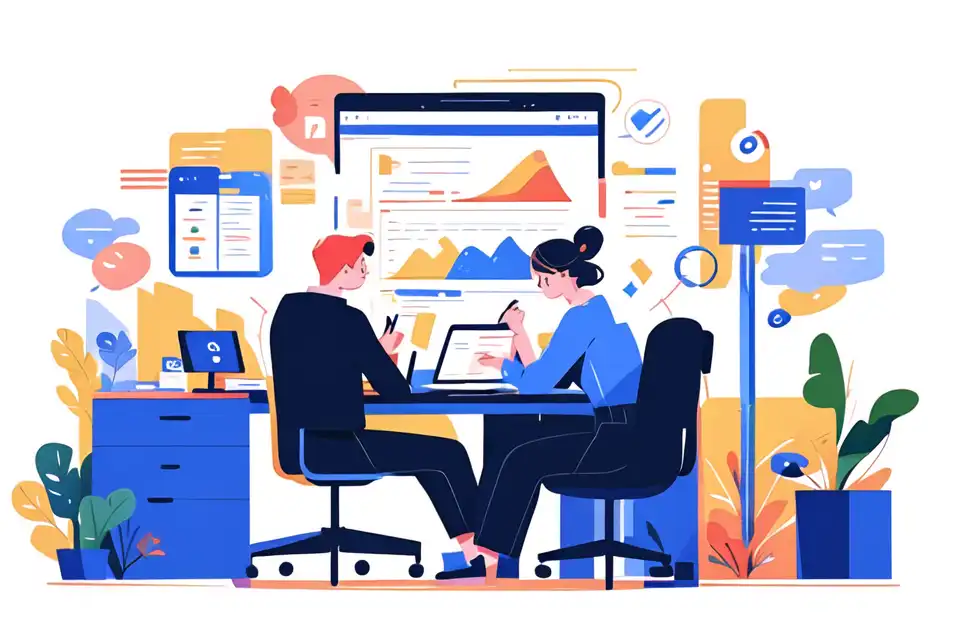Collaborative Note
Explore what collaborative note means for your meetings. Learn more about its definitions, best practices, and real-world examples to enhance your meeting effectiveness. Dive into the importance, challenges, and solutions for each term.
Try Lark for Free
Collaborative note-taking is a practice that involves multiple participants contributing to a shared digital or physical document during meetings. This approach facilitates the collective capture of key points, action items, and insights, ensuring that all stakeholders have access to the same set of notes. Embracing collaborative note-taking not only fosters inclusivity and transparency but also encourages active participation among meeting attendees. As a result, teams can leverage these comprehensive notes for informed decision-making, tracking progress, and ensuring accountability.
Get Lark for meeting minutes today.
Definition of collaborative note
Collaborative note-taking refers to the process of multiple individuals actively contributing to the creation and maintenance of a collective record of meeting proceedings or discussions. This shared documentation can take various forms, including electronic platforms, digital whiteboards, or traditional paper-based methods. The fluid nature of collaborative note-taking enables participants to engage in real-time updates, annotations, and revisions, ensuring that the document accurately reflects the collaborative input of all involved parties.
Importance of collaborative note in meetings
In the context of meetings, collaborative note-taking serves as a catalyst for enriched collaboration and knowledge retention. By enabling all participants to have input into the note-taking process, this approach underscores the value of shared responsibility and inclusive knowledge representation within the meeting environment. As a result, the collective understanding of meeting outcomes, action items, and insights is enhanced, leading to greater alignment and clarity among the attendees.
Learn more about Lark Minutes
Provide examples of how collaborative note applies in real-world meeting scenarios
Examples 1
Examples 1
In a recent brainstorming session, team members engaged in collaborative note-taking using a digital whiteboard platform. This allowed them to simultaneously contribute ideas, suggestions, and action items, fostering a dynamic exchange of perspectives and boosting creativity.
Examples 2
Examples 2
During a remote team meeting, the utilization of collaborative note-taking software enabled geographically dispersed participants to actively engage in the documentation process. This inclusive approach not only facilitated effective knowledge sharing but also ensured that every team member's input was captured and acknowledged.
Examples 3
Examples 3
In a project update meeting, collaborative note-taking proved instrumental in capturing the nuances of complex discussions and decisions. By cultivating a shared record of the meeting, the participants were able to refer back to the documented insights, minimizing the risk of misinterpretation and misalignment.
Examples 4
Examples 4
Within a cross-functional team meeting, embracing collaborative note-taking encouraged individuals from diverse backgrounds to contribute their unique perspectives and expertise. This collaborative endeavor not only enriched the documented content but also fostered a sense of collective ownership and mutual respect among the team members.
Examples 5
Examples 5
In an educational setting, collaborative note-taking among students during group discussions helped consolidate their collective understanding of the material. This approach encouraged active listening, critical thinking, and effective knowledge co-creation, ultimately enhancing the depth and quality of the learning experience.
Best practices of collaborative note
Effectively implementing collaborative note-taking in meetings requires a strategic approach aimed at maximizing its benefits while mitigating potential drawbacks. By adhering to best practices, organizations and teams can harness the full potential of collaborative note-taking to foster productive and meaningful interactions.
- Choose the Right Tools: Select digital platforms or physical mediums that suit the nature of the meeting and resonate with the participants' preferences and technical competencies.
- Set Clear Guidelines: Establish clear expectations and guidelines regarding participation, note formatting, and the timeline for document sharing and revision.
- Encourage Equal Contribution: Emphasize the importance of inclusive participation, ensuring that all voices are heard and integrated into the collective notes.
- Facilitate Synchronous Updates: Utilize real-time collaborative tools to enable synchronous contributions, fostering a dynamic and interactive note-taking process.
- Consolidate and Share: After the meeting, consolidate the collaborative notes into a comprehensive document and ensure timely distribution to all relevant stakeholders.
Learn more about Lark Minutes
Challenges and solutions
While collaborative note-taking offers numerous benefits, it is not without its challenges. Addressing these obstacles proactively can significantly enhance the effectiveness and efficiency of the process.
Challenges:
- Divergent Perspectives: Different participants may have varied interpretations of the discussions, leading to potential discrepancies in the documented notes.
- Technological Barriers: Technical issues or compatibility constraints with collaborative note-taking platforms can hinder seamless participation.
- Information Overload: Simultaneous contributions from multiple participants can culminate in an overwhelming volume of data, impacting the clarity and organization of the notes.
Solutions:
- Alignment Checks: Periodically align on key points during the meeting to ensure a collective understanding, minimizing discrepancies in the documented notes.
- Technical Support: Provide adequate training and technical support to participants to mitigate potential technological barriers, ensuring smooth participation.
- Structured Contributions: Implement guidelines for structured contributions, ensuring that participants focus on key takeaways and avoid information overload during note-taking.
Conclusion
In conclusion, collaborative note-taking represents a transformative approach to capturing and consolidating information during meetings. By promoting inclusivity, transparency, and active engagement, organizations can harness the power of shared note-taking to elevate the quality of their discussions, enhance knowledge retention, and drive informed decision-making. Embracing best practices, addressing challenges, and leveraging real-world examples can empower teams to harness the full potential of collaborative note-taking, ultimately fostering more productive and impactful meetings.
Get Lark for meeting minutes today.
